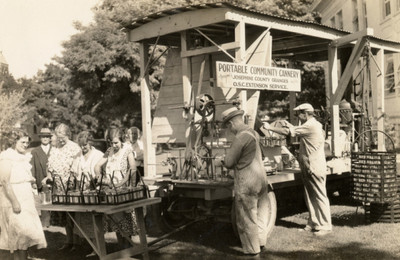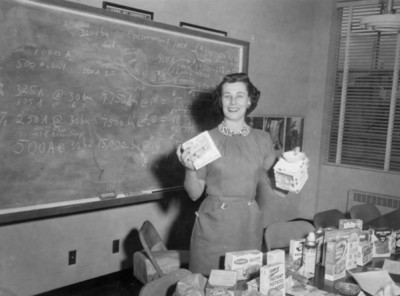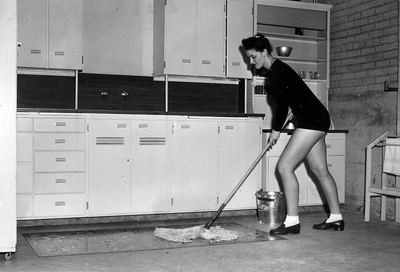During the Great Depression of the 1930s, the home economics programs expanded to help address the needs of struggling Oregonians by connecting households and communities. The state’s home demonstration agents worked with local county relief committees, prepared bulletins on low cost foods, taught courses on food preservation methods, distributed seeds for subsistence gardens, and helped coordinate communal canneries and kitchens to ease food shortages. By the end of the decade, home economics staff had expanded considerably to include 12 county home demonstration agents who coordinated the efforts of over 3,800 volunteer project leaders.
Guide for Weekly Market Order to Provide Adequate Diet at Minimum Cost--1933
—by Jessamine Williams and Lucy Case
Following WWII, it was clear that more needed to be done to fully integrate home economics into the Extension program. While agriculture extension had clear economic benefits and 4-H could be marketed as a youth program, convincing legislators to consistently fund home economics was more challenging. Since the 1950s, new programs in personal and household finance, parenting, emergency preparedness, and physical fitness have helped Extension to reach even more Oregon families.
Home Economics Documents in ScholarsArchive@OSU
Home Cooperators' Demonstration Project, 1917
The kitchen : its arrangement and equipment, 1917
You and Your Clothes, 1921
Safe home canning, 1924
Farm kitchen planning, 1937
The color wheel in home furnishings, 1939
Farm and home vegetable garden, 1943
Foods from the freezer: precooked and prepared, 1958
30 Days to Reality, 1970



